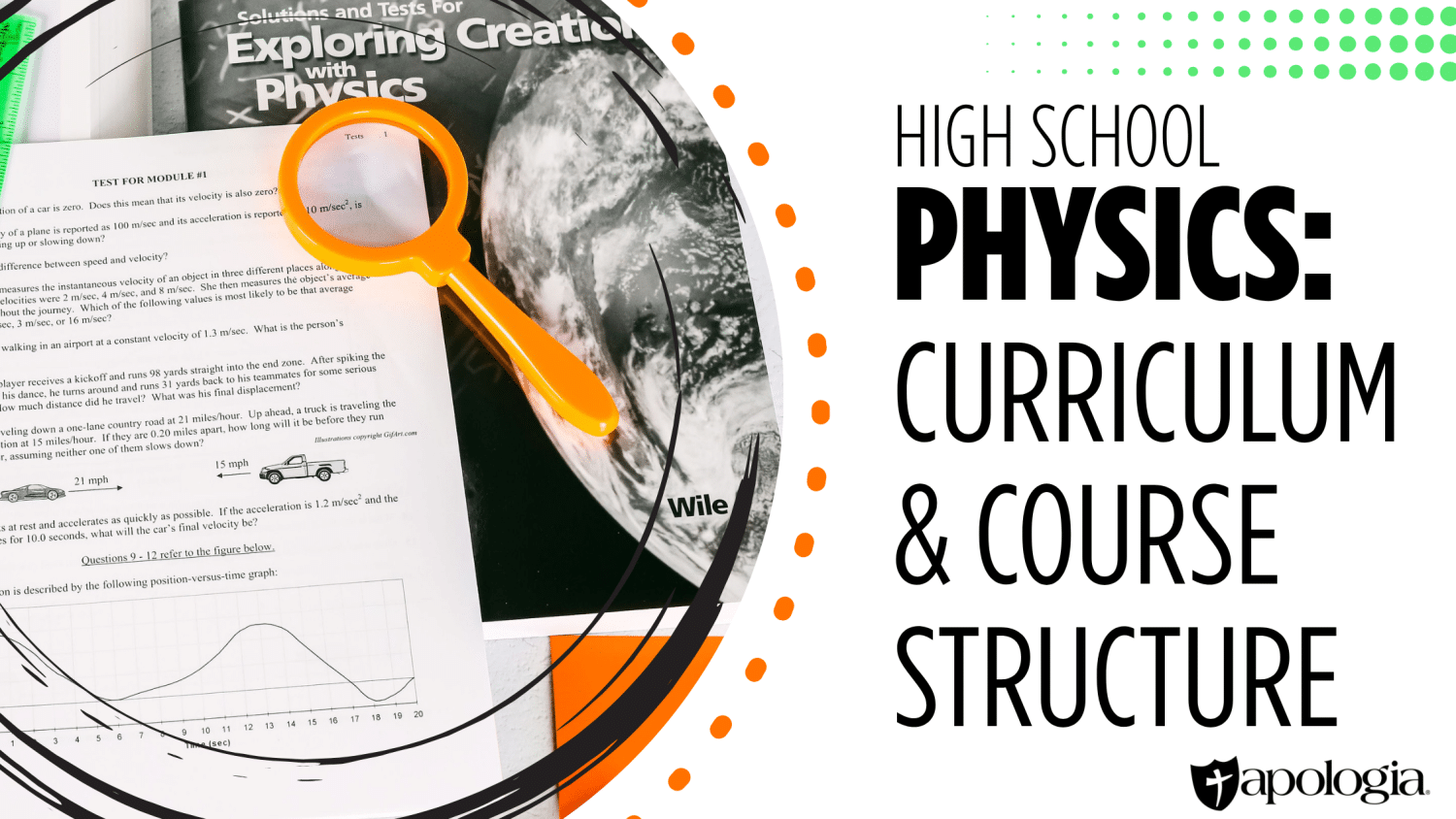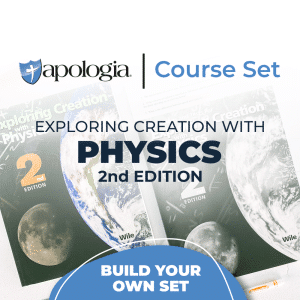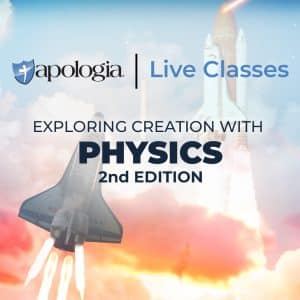
High School Physics: Curriculum & Course Structure
Apologia is here to make homeschooling science that much simpler. With our high school physics curriculum, you and your students will cover the fundamentals of physics across 16 modules, helping them gain a deeper understanding of core topics ahead of their college years.
Below are some of the topics included throughout each of the 16 modules in our course:
Module 1: Motion is One Dimension
This module introduces key concepts of displacement, speed, and velocity, and how objects move along a straight path. Students will also learn:
- The difference between distance and displacement
- Average and instantaneous velocity
- Acceleration
- How to measure an object’s acceleration
Module 2: One-Dimensional Motion Equations & Free Fall
Your child will explore motion under constant acceleration, such as that of objects falling under gravity. As part of this module, they’ll also solve problems using practical formulas, and:
- Understand acceleration and gravity
- Calculate time, velocity, and displacement in free fall
- Take a look at the factors that affect air resistance
Module 3: Two-Dimensional Vectors
This module introduces vectors and how they represent quantities with direction. Students will learn to analyze motion in two dimensions, and:
- Understand vector addition and subtraction
- Apply vector addition to physical situations
Module 4: Motion in Two Dimensions
Students examine motion in two dimensions, including projectile motion. They’ll apply vector analysis to solve real-world problems, as well as:
- Analyze projectile motion using the range equation
- Discover when the Range Equation does not apply to two-dimensional situations
Module 5: Newton’s Laws
Here, students explore how forces affect motion and understand how Newton’s laws provide the foundation for interpreting movement in the universe. Students will:
- Learn more about Sir Isaac Newton’s background
- Understand the concept of force and its units
- Explore Newton’s first, second, and third laws
- Apply Newton’s laws to everyday examples and experiments
Module 6: Application of Newton’s Second Law
This module delves deeper into how forces cause acceleration. Students will apply Newton’s second law to various scenarios, and:
- Understand what causes rotational acceleration
- Explore rotational motion and torque
Module 7: Uniform Circular Motion & Gravity
Students examine circular motion and how gravity governs planetary motion. As part of this module, Newton’s law of universal gravitation is applied to real-world examples. Students will:
- Understand uniform circular motion and centripetal force
- Calculate centripetal acceleration and forces
- Explore Newton’s law of universal gravitation
- Analyze planetary motion and orbits
- Relate gravity to everyday experiences on Earth and in space
Module 8: Work & Energy
Students discover how energy moves and changes form. This module connects work, kinetic energy, and potential energy to help them:
- Understand the mathematical definition of work and calculate its value in simple systems
- Understand kinetic energy as the energy of motion
- Explore potential energy stored in objects or systems
- Discover the first law of thermodynamics
- Learn the principle of conservation of energy
Module 9: Momentum
This module explains how moving objects carry momentum and how forces change it. For example, it uses collisions to provide practical applications for these concepts. Students will learn to:
- Define momentum and its relation to mass and velocity
- Understand impulse as a force acting over time
- Explore momentum and energy conservation
- Understand the mathematics of momentum conservation
- Consider angular momentum
Module 10: Periodic Motion
Students explore repetitive motion, such as that of springs and pendulums. They’ll learn the physics behind oscillations and waves, as well as:
- Understand Hooke’s law
- The mathematics of the mass/spring system
- The characteristics of a mass/spring system
- Explore potential energy in a mass/spring system
- Apply concepts to real-world examples like clocks and musical instruments
Module 11: Waves
Students explore wave behavior and the special case of sound, using practical examples to make wave phenomena easier to understand. They’ll also look at:
- The definition of waves and their properties (wavelength, frequency, speed)
- Sound waves in substances other than air
- The speed of light, light as a wave, and light as a particle
- Learn about interference, reflection, and the Doppler effect
- The biographies of two important physicists
Module 12: Geometric Optics
In this module, students will consider geometric optics, such as the law of reflection and different types of mirrors. The module will look at:
- Ray tracing in concave spherical mirrors
- Real and virtual images in a concave mirror
- Snell’s law of refraction
- Converging and diverging lenses
- The human eye
Module 13: Coulomb’s Law & The Electric Field
In Module 13, students will study more about Coulomb’s law and the electric field, including the basics of electric charge, as well as attraction and repulsion. They’ll also consider:
- Electrostatic force and multiple charges
- Calculating the strength of the electric field
- The Bohr model of an atom
- How to make and use an electroscope
Module 14: Electric Potential
Students learn about electric charges and electric fields in Module 14. They’ll explore how static electricity affects everyday life, and:
- Understand electric charge and its properties
- Analyze electric fields and potential
- How a television makes its picture
- Learn about capacitors and their applications
- Conduct experiments to observe electrostatic phenomena
Module 15: Electric Circuits
As part of Module 15, students will take a deeper look at electric circuits and better understand batteries, electric heaters, and electric power. The module also explores:
- Series and parallel circuits
- Fuses and circuit breakers
- Current and power in series and parallel circuits
- Analyzing more complex circuits
- The mathematics behind series and parallel circuits
Module 16: Magnetism
Students explore how electric circuits work and how magnetic fields influence them. They’ll apply their knowledge to build and analyze circuits.
- Understand components of electric circuits (resistors, capacitors, etc.)
- Analyze series and parallel circuits
- Explore electromagnetic induction
- Learn about transformers and motors
- Conduct experiments to build and test circuits
A Comprehensive Physics Curriculum with a Faith-Based Perspective
This curriculum offers a comprehensive and structured approach to high school physics, integrating theoretical knowledge with practical applications. Each module builds upon the previous one, ensuring a cohesive learning experience that prepares students for advanced studies in physics and related fields.
Designed with a strong faith-based foundation and easy-to-understand lessons, our program equips students to excel in college-level science. Learn more by checking out our live class options or exploring our flexible self-paced courses.




